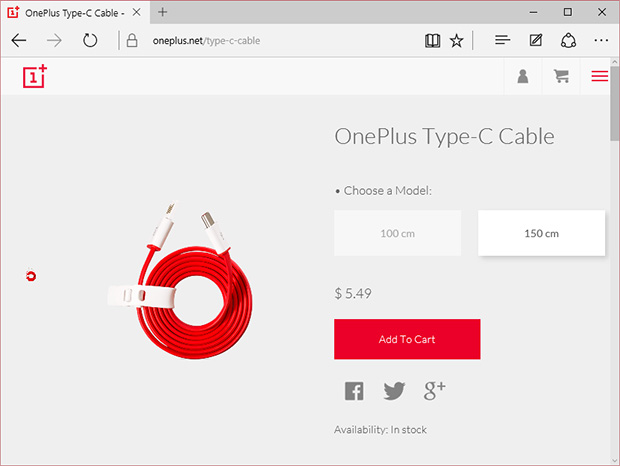Google Engineer Continues USB Type-C Cable Crusade, Calls Out OnePlus For Non-Compliance
You have to be careful when buying cables, especially ones based on the relatively new USB Type-C spec. That's true even if you limit your purchases to vendors like Amazon and, apparently, phone makers like OnePlus. When it comes to shaming companies for non-compliant Type-C cables, Google engineer Benson Leung is an equal opportunist, as OnePlus is finding out.
In case you missed our previous coverage, Leung's been posting reviews of Type-C cables and accessories on Amazon. While some of them have been positive, there are several negative evaluations out there, mostly because cable makers are cutting corners and not designing their parts based on the certified standard laid out by the USB Implementers' Forum (USB-IF), a non-profit founded by the group of companies that developed the USB specification.

Google engineer Benson Leung says OnePlus' USB Type-C cable isn't built to spec
Leung's latest target is a red colored flat ribbon Type-C cable that's sold and shipped directly from OnePlus. One of the phone maker's selling points is that its cable sports a 90-degree pivot angle to prevent breaking, which it says is "a patented feature that is 100 percent exclusive to OnePlus."
Be that as it may, Leung suggests steering clear of the cable, which is available in 100cm ($5.49) and 150cm ($6.99) lengths.
"Do NOT buy this USB Type-C to Type-A cable from OnePlus," Leung warns on his Google+ page. "It is not spec compliant (uses a 3A identifier resistor instead of the 'Default USB Power' one), and may cause damage to your charger, hub, or PC USB port if you use it with a Chromebook Pixel, Nexus 6P, or Nexus 5X."
He also warns against buying OnePlus' USB Type-C adapter for the same reason, adding that "OnePlus needs to get the message that their accessories are out of spec."
What's at issue here is that devices like the Chromebook Pixel and Nexus 6P will attempt to pull 3A of current through an adapter that can only support 1A or maybe 2A. There is a pull up resistor going from the Type-A end to the Type-C end, which means the Type-C end device decides the current to pull.
With a low value resistance the Type-C side device thinks it's fast charging so it pulls the current it wants regardless of whether the supplier (Type-A side) can support it. Doing so could potentially damage the USB hub or charger on the Type-A side.
You can click here to see a list of cables Leung has reviewed, both good and bad.
In case you missed our previous coverage, Leung's been posting reviews of Type-C cables and accessories on Amazon. While some of them have been positive, there are several negative evaluations out there, mostly because cable makers are cutting corners and not designing their parts based on the certified standard laid out by the USB Implementers' Forum (USB-IF), a non-profit founded by the group of companies that developed the USB specification.

Google engineer Benson Leung says OnePlus' USB Type-C cable isn't built to spec
Leung's latest target is a red colored flat ribbon Type-C cable that's sold and shipped directly from OnePlus. One of the phone maker's selling points is that its cable sports a 90-degree pivot angle to prevent breaking, which it says is "a patented feature that is 100 percent exclusive to OnePlus."
Be that as it may, Leung suggests steering clear of the cable, which is available in 100cm ($5.49) and 150cm ($6.99) lengths.
"Do NOT buy this USB Type-C to Type-A cable from OnePlus," Leung warns on his Google+ page. "It is not spec compliant (uses a 3A identifier resistor instead of the 'Default USB Power' one), and may cause damage to your charger, hub, or PC USB port if you use it with a Chromebook Pixel, Nexus 6P, or Nexus 5X."
He also warns against buying OnePlus' USB Type-C adapter for the same reason, adding that "OnePlus needs to get the message that their accessories are out of spec."
What's at issue here is that devices like the Chromebook Pixel and Nexus 6P will attempt to pull 3A of current through an adapter that can only support 1A or maybe 2A. There is a pull up resistor going from the Type-A end to the Type-C end, which means the Type-C end device decides the current to pull.
With a low value resistance the Type-C side device thinks it's fast charging so it pulls the current it wants regardless of whether the supplier (Type-A side) can support it. Doing so could potentially damage the USB hub or charger on the Type-A side.
You can click here to see a list of cables Leung has reviewed, both good and bad.

